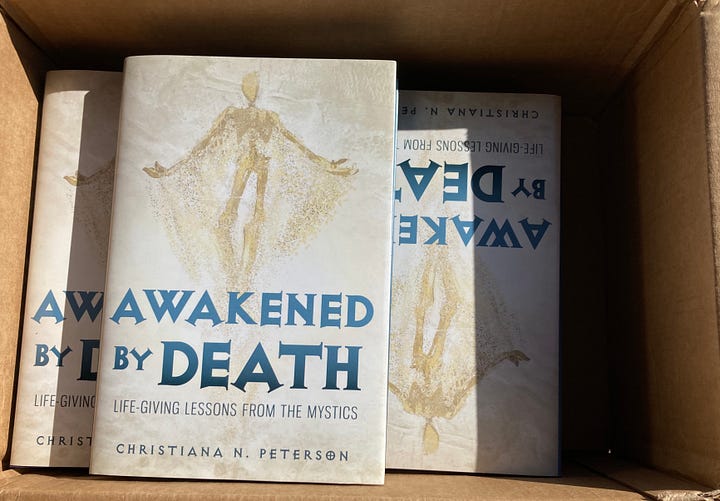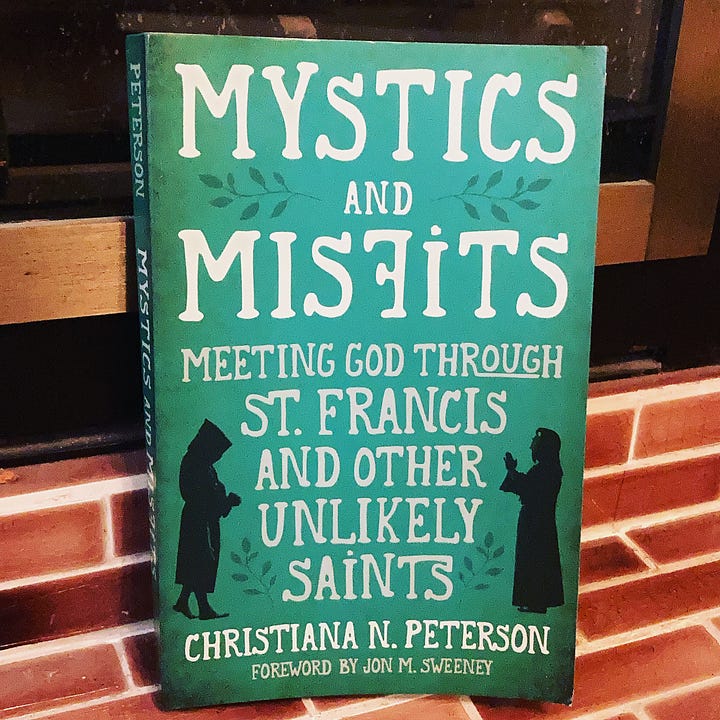The Gospel is a Song
Makoto Fujimura, Gerard Manly Hopkins, the necessity of art, and My Lady Jane (the book)
More than fifty Canada geese graze along the edges of a baseball field. I watch them out the wide windows of a library study room where I spend the many hours between dropping off my kids at their new school and picking them up again.
The geese feed in communion, tapping at the ground one moment, their heads bobbing elegantly, then raising their long black necks in unison, holding so still, as something—a potential danger or noise—distracts their feeding.
The grazing of the geese illuminates the true necessities of life—of daily bread, the birds being fed, the clothing of flowers, the grass how it grows and withers each year, each season in its own time.
It is a good reminder. Both of the need to be grateful that my needs are taken care of and also how, as Gerard Manly Hopkins writes poetically,
The world is charged with the grandeur of God.
It will flame out, like shining from shook foil;
Recently I received a note from someone encouraging me to meditate on some verses in the Bible that pertain to avoiding witchcraft and sorcery. I could surmise from that pointed message that this person doesn’t share my appreciation for fantasy literature, writing about death, or researching the mystics.
Maybe my skin is a little too thin but I have to admit that it hurt a little for the things I love and work at, things that have enriched my faith, to be seen as damaging to the church or my spiritual life. It was an appropriate time, then, to be reading Makoto Fujimura’s Art and Faith, a rich mediation on the “Theology of Making.” As an influential visual artist Makoto Fujimura has encountered many Christians who see art and the imagination as dangerous to Christianity.
Imagination, like art, has often been seen as suspect by some Christians who perceive the art world as an assault upon traditional values. These expectations of art are largely driven by fear that art will lead us away from truth into an anarchic freedom of expression.
Fujimura came to Christianity while living in Japan and studying Japanese art. In seeking more meaning in his life, he wasn’t interested in the Bible until he discovered the poetry of William Blake, a mystical artist whose work is infused with the supernatural and fantastical.
Since then, much of Fujimura’s work has been an intertwining of his Christian faith and his art. Like a breath of fresh air, in Art and Faith, I hear that art is not a stumbling block to faith. Nor is it just a good hobby or side project. Art has the ability to make us see the Gospel in a new way. Making art is a necessity to encountering God and sharing the good news.

“I am listening to the voice of the Creator through my creation,” Fujimura says as he describes communing with God through his art, “I am drawn into prayer as I work.”
Tellingly, he notes that when he explains this “sacred dimension of creating art” to others, it is often non-Christians who understand what he means better than people of faith. Why is this?
According to Fujimura, many people of faith can have a misunderstanding about what Christianity is. For some Christians, faith is intertwined with the vestiges of “the mechanistic post-Industrial thinking of utilitarian pragmatism.”
Gulp! I had to reread that a few times.
I think what he means is that, as a result of the Industrial Revolution and the Enlightenment, the Western world began to view much of life, even faith, through a mechanistic utilitarian lens. Meaning: everything had to be useful. Or explainable. Or understandable.
I like Fujimura’s illustration here:
“Imagine,” he says, “trying to explain to a flying bird the aerodynamic forces at work when its wings move. Perhaps explaining it undermines the flight itself. Perhaps the effort to understand it will not help the flying at all.
We need theologians to explain the nuances of Scripture. It can even be enlivening. Memorizing Scripture and seeking understanding about God and God’s creative order are good things for our faith. But it’s also possible to explain our faith to death and be no closer to encountering Jesus than we were before.
This is where artists can actually be a vital part of the life of faith and “open new doors of theological illumination in sharing” the Gospel. How do artists do this?
Well. You’ve probably known an artist-type. Maybe you’ve rolled your eyes at them a time or two: moody, deeply feeling, overly emotive.
To be fair to these artist-types, making art, Fujimara says, “does not come easy.”
We live in a fallen world. Such intuitive overlaps are hard to explain rationally and we tend to avoid the emotive feelings side of experience. But as artists, we are trained to trust our intuition, to think through our feelings, and even to distrust our emotions at times to gain access to deeper integrated realities.
Artists can certainly be self-indulgent, arrogant, or piteous. They can be idolatrous and overcome with their own self-importance, their envy, or the damaging ways of the world.
But artists who hones their craft can actually access the wells of human feeling that many of us don’t know how to access or are afraid to try. Those seemingly bottomless emotional landscapes, those ups and downs: they are part of the human experience. They are part of how we stumble, struggle, fall, fail, and find God in the suffering. And a wise artist who has suffered those emotional waves can come back from the depths to nurture the rest of us.
While I’m no great artist like Fujimura, I have been known to have some, uh, deep feelings (I can hear my mother and husband laughing uproariously at my understatement here). And I have been known to try and convey those feelings and my faith through artistic mediums.
But it’s also that my own faith has been so enriched by artists, both Christian and secular, who long to express the human experience and offer hope and light in the midst of a broken world.
And if Fujimura is right, Christians reject creativity, imagination, and art at our peril. The Christianity that is undergirded by rationalistic utilitarian thinking is showing its cracks and chasms. People are leaving the church in droves. The way forward is not to double down and cut ourselves off.
Instead, we must listen not only to artists like Fujimura, but the prophets and the mystics, both ancient and new, who show us that encountering God in a deeper way is possible.
That is a task of artists and mystics in a broken world. To help the rest of us notice what we might pass by every day without another thought. To take us by the shoulders and say, “Look. Look at that!”
Sometimes what we will see is grotesque and awful. Sometimes we will see the breaks in the world. And then, at other times, we will notice the way the light reflects off the wing of a bird and God is revealed:
the Holy Ghost over the bent/World broods with warm breast and with ah! bright wings.1
Fujimura reminds us that God is a Creator who invites us as co-creators, not because God needs us but because God loves us. In an artist’s eye, the Word is not a series of symbols on a page but the living Christ who sings to the world with the Good News.
The Word is a work of art and the message of Jesus is beautiful. Fujimura says it best:
The Gospel is a song.
Speaking of Art:
Music: Mirrors by Max Richtor, an achingly beautiful piano piece. Listen to the whole album, which is inspired by the Universal Declaration of Human Rights of 1948, interspersing the words of the Declaration with “bittersweet” orchestral melodies.
Books: My Lady Jane by Cynthia Hand, Brodi Ashton and Jodi Meadows. The book is a sweet and funny departure from the true story of Lady Jane Grey. As a note: the tv series is very different from the book.
My books:


Mystics and Misfits: Meeting God Through St. Francis and Other Unlikely Saints
Awakened By Death: Life-Giving Lessons from the Mystics
From Gerard Manley Hopkins’s poem “God’s Grandeur”





So sorry you received such an unhelpful call to meditate. I'm grateful for the gifts that God has given you that make you uniquely you. Keep being who God has made you to be!
Yes to all of this! I am currently reading the little devotional book, All That Is Made: A Guide to Faith and the Creative Life. (Alabaster Press.) Highly recommend! A quote I'm savoring from it: "As creative people, we are invited to help usher in God's invisible kingdom. This is sacred and meaningful work..." (15). You are the second person to highlight Fujimura's book. Sounds like I need to get myself a copy!